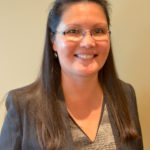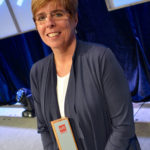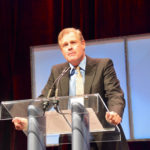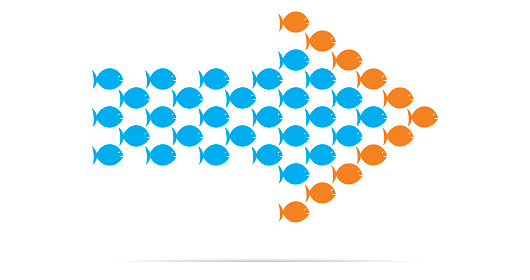The HR Mindset: Keeping People First
By Nancy Painter
For years now, HR professionals have heard that they need to understand their organization’s business to be effective. The question is—does business understand HR?

Drew Railton, CPHR
“You can talk to 20 different leaders, and each can have a different idea of what the HR mindset is: analytical, technical, experienced, coach, asking great questions, problem-solving, expert in softer skills,” says Drew Railton, CPHR, managing partner at Caldwell Partners’ Vancouver and Calgary offices. “HR finds the answer to the question: how do you use talent to solve problems or capitalize on opportunities?”
Over his career, Railton says, “The HR leaders who stood out are those individuals who have been able to pull themselves out of the day-to-day, who have refined the ability not only to coach and partner with their executive peers, but have honed the ability to ask questions that get to the root of problems.
“Then they are able to come up with solutions, independently or in conjunction with others, to use talent to solve those issues. They are able to translate and understand the roadblocks, hurdles and impediments that exist,” he explains.
Seeing the Bigger Picture: Asking the Hard Questions
HR leaders are in the unique position to ask difficult questions because they have the view of every corner of the organization while other leaders function more in silos, according to Cheryl Pelletier, CPHR, director of HR for the Nisga’a Lisims Government, located 100 km north of Terrace.

Cheryl Pelletier, CPHR
“We’ve walked the line for so long, we know what pitfalls to look for,” Pelletier says. “We can anticipate the ripple effect if direct change happens in one area because there is going to be an impact. HR sees where and to what degree. Some people will just need to know about the change; for others, it will change the way they have to work.”
Business leaders aren’t hard-wired the same way that HR leaders are, Pelletier continues: “They are focused on the bottom line for their departments, as they should be. HR has the wider view, and needs to ask the difficult questions that other leaders sometimes don’t even recognize until it’s too late. HR recognizes the inter-dependency of different departments.”
“HR is no longer the clean-up crew; we should be at the front of the pack,” she says. “We’ll provide options and likely ramifications and let senior leadership choose. The forefront of our questioning is “If” and we want to mitigate the “If.” We want to have a couple of options so we’re not scrambling to start all over if something doesn’t work out as expected.”
Pelletier hold it as HR’s responsibility to recommend which option it believes is best, and to fully educate leadership about that decision. If leadership doesn’t go with the recommended course of action, HR has to be prepared for the fallout. “At the end of day, there is still going to be some clean-up,” she says. “HR is where people come with their questions.”
Aligning People Capabilities with Business Needs
With its broad view of the organization and its corporate and separate business strategies and priorities, HR can then say with confidence, as in the words of Barbara Meens Thistle, CPHR,

Barbara Meens Thistle, CPHR
vice-president of central services at the Insurance Corporation of BC, “In order to get that done, here are the skills that people will need, and here are different ways to achieve that.”
Meens Thistle’s portfolio includes HR, strategy and planning, operational execution, strategic sourcing, project services, material damage operations, including the Special Investigations Unit, and overseeing all facilities in the province-wide operation.
“It’s really big news that an HR leader is given a wider scope of responsibility and is seen as a business partner,” says Thistle, whose wisdom and ways won her the title of HRMA’s 2016 HR Professional of the Year. “HR drives the people, culture, systems, and strategic change—it can only help to have HR at the table when decisions are made.”
The cost of people is normally 50 to 70 per cent of a business’s budget, Meens Thistle points out. “If we spent that on trucks, we’d take good care of them. If we don’t keep employees engaged, energized and having a good experience, how can we grow? We have to take care of them or the organization will malfunction,” she says. “We’re making sure that we’re representing the human element in the business, and ensuring we are getting the best return and value from that investment.”
HR can champion employees by working with leaders to make them better leaders and helping them understand what the people on their teams need to function to their greatest potential, Meens Thistle adds.
Looking Ahead to Future Needs
HR can add great value by focusing on the future, according to Bernadette Smith, vice-president of talent development solutions at Canadian Management Centre (CMC) in Toronto.
“We need to create a work environment and talent pool that meets current and future needs of the workplace to achieve the mission, vision and goals of the organization,” says Smith. “What do you need to be working on now, to be successful in the future? We need to pro-actively align people strategies with business needs,” she says.

Bernadette Smith
“The way of the future is TNT—all about talent and technology—and how they can disrupt your business,” says Chris Catliff, president and CEO of Blueshore Financial, headquartered in North Vancouver.
He says all businesses face three choices: start-ups with technology focus; taking an established business and completely re-inventing it in a digital way both internally and externally; or not changing and perishing within a few years.
“So we have to change the way we do business to survive, and HR is critical in accomplishing that,” says Catliff, the inaugural 2016 recipient of HRMA’s Keeping People First: CEO Award.
He speaks from experience. First established as a credit union for shipbuilders during World War II, Blueshore Financial has now created a motivating digital journey for its clients by looking both inward and how it projects outwardly.
They have built digital literacy assessments into their organization, Catliff adds. “Everyone has a place on the bus, but over time they need to be digitally literate. HR does so much training—even one-minute vignettes on our intranet every day. We all do them, I love them. I think there’s a lesson for all industry there.”

Chris Catliff
Identifying cultural fit with the organization is also key to future success, Catliff says. “We hire for fit and potential, and then we train.”
Enabling and Equipping Leadership to Excel
Over time, how people see HR has shifted from it supporting employees in an administrative way to a robust role supporting leadership, says Smith. “It’s an important shift to supporting and helping leaders to manage talent and building the future talent capability.”
Leaders are distracted by constant interruption, consistent flux and changing employee needs; they are also under more stress to deliver results and less connected to employees than in the past, Smith explains, presenting an opportunity for HR to build the necessary connections.
CMC’s clients are increasingly looking for leadership development, investing in leaders to help them cope with challenging times and management of a multi-generational workforce, she adds.
Of course, working with leaders can require special skills. “A big part is building relationships. Nobody is great singularly; we want to be working in conjunction with others,” Railton says. “HR has a softer influence on results, and if you’re really good at it, they probably don’t realize you’ve done it with them.”
“HR has to ask delicate but essential questions: have you considered this or that? Have you considered the potential impact on this?” says Pelletier. “You want them to come up with the pitfalls and solutions themselves, because then they’re more likely to follow through on them. You want them to come at things from a different perspective.”
Sometimes it’s about planting seeds, she adds. “You never know when people will start thinking about things, and recall something you said earlier about that topic.”
Fortunately, HR is expert at having difficult conversations, Pelletier says. “There are so many roadblocks stopping business from moving forward because people can’t have those difficult conversations.”
Recognizing and Overcoming Resistance
HR can often run up against resistance to solutions from leadership. “I tend to step back and ask ‘Why isn’t the leadership team ready to hear this? What capacity and capability do they have or what else is going on in their area?’” asks Meens Thistle.
She, too, speaks from experience, having overseen the replacement of 40-year-old technology in both claims and policy centres at ICBC and in its 9,000 broker offices.
By recognizing the pressures the business is under, Meens Thistle says, “You can say, what are 10 things (of a suggested 30) that we can get them to do to start them down the road? And then introduce the next 20 when we see the successful effect of the first 10, and so on. Then HR is seen as a partner, and as practical and reasonable.”
Naturally, HR needs to relate to the priorities of the business, and be prepared with a Plan B or Plan C, too, she adds.
“What HR really needs to be is extremely challenging, politely confronting and provoking change when it clearly is not happening,” says Catliff. “The CEO has to have HR’s back —we’re talking about ruffling some feathers along the way here.”
Understanding has to go beyond leadership, he adds. “HR has to have its ears to the ground to know what employees are thinking and bringing to their managers. In today’s workplace with today’s workforce, authority doesn’t give you legitimacy. Understanding your people and demonstrating that you do, does. With legitimacy, everything unfolds.”
HR also needs to earn legitimacy with leadership if it is going to gain the influence it needs, Catliff adds. “You need to speak the language of business, numbers and dollars. You need to show how your strategy solves a business problem, how it moves the business ahead. Show how your past programs have worked. It all helps build a strong relationship with your stakeholders.”
A Long List of Talents and Skills
Seeing the big picture. Asking the hard questions. Outlining potential solutions and ramifications. Getting a return on human investment. Preparing for the future. Earning legitimacy in the now. Overcoming resistance. Coaching leaders. Collaborating. Understanding the workforce.
It’s a long list of qualifications, and it’s not a complete one. Talent acquisition is another skill that is key to the HR mindset. “Finding the right talent for an organization is so important. Once an employee or prospective employee buys into your employee brand, HR has to ensure that promise is kept,” says Smith.
“When an individual joins, they buy into that organization and their ability to do fulfilling work there. We have to make sure their contributions will be recognized and the organization will support them. That’s fulfilling our brand promise,” she explains. “They have to know we’re keeping their best interests in mind, enabling them to achieve their full potential, looking after them in times of change and, especially, involving them and making them feel valued.”
“HR professionals understand what it takes to create an engaged and high-performing workforce,” Smith says. “The impact that engaged employees can have on the growth and success of an organization—leaders may not have learned that yet. Many leaders are technically strong with less emphasis on people. HR can provide that connection, and help leaders become more empathetic.”
Finding Creative Solutions
Creativity is also key to the HR mindset. Smith cites the example of a workplace that hasn’t been able to deliver annual salary increases. “What does HR do? How does HR find other benefits that are not monetary? Maybe it’s more awards and recognition in front of peers—non-monetary recognition goes a long way in creating an engaged workforce.
“People are just so busy that they may not take the time to acknowledge the good work of their colleagues or teams. Keeping gratitude front and centre over time is important, too,” says Smith “HR teams have had to be so much more creative to give back something meaningful to employees when the organization is constrained in other ways.”
Meens Thistle points to the example of allocating overtime work to those who want it when a collective agreement has a very specific protocol for overtime. “So we have to think, how else could we do this and not violate the collective agreement?” It’s a balance of governance and problem-solving, she says.
She identifies the recognition of the changing workforce as another requirement. “Organizations that haven’t changed in 10 or 15 years aren’t tuned in with their workforce, and that’s not going to help them get and keep the people they need for the next 25 years.”
“We have five generations working in our organization,” says Pelletier. “The things that are important to people are different at different times of their lives. We can’t provide the same things for everyone, but we can be fair.”
At Blueshore Financial, the organization even looks beyond itself to help meet employee needs. With housing prices pushing people further and further from Vancouver to find homes, transportation is a key issue for Blueshore employees, Catliff explains. “We need to take a broader socio-economic view.” As a result, his organization is engaged with politicians, seeking input into such things as the Translink 10-year vision for transportation in Metro Vancouver.
People First and Last
The long list of HR mindset skills notwithstanding, the word “human” is not just an adjective, but a focus, for any HR professional.
A true HR professional “sees resources as humans and individuals,” says Railton. “People skills are more important than ever. For lots of companies, your best resources walk in and out of the door every day.”
“Employees need to be nourished, to be nurtured, so they can flourish,” Meens Thistle says. Vital contributors to that include recognition, timely feedback, and clear expectations.
Smith sums up HR’s role as balancing the needs of the employees with the needs of the organization, “keeping the best interests of employees front and centre, in balance with the organization’s interests. People policies need to support the business as well,” she says. “The HR mindset is aligning and enabling employees to work to their potential so they can contribute to achieving the organization’s mission, vision, values, current and future goals.”
It’s up to HR to ensure employees are looked after and equipped to help the organization move forward, she adds.
One example is the recent emergence of mindfulness training for employees, creating an environment in which individuals can cope with increasingly demanding lives. “We need to reinforce the development of people in organizations. We need to transfer the good work HR does in being so people-focused to leaders in organizations so they can inspire employees to do their best work,” Smith says.
Another example is investing in courses, conferences and accreditation for both vertical and horizontal employee development, Catliff adds.
“HR recognizes the effect on humans of business decisions,” says Pelletier, in the cost of down time, short- and long-term disability, and “presenteeism” also—those employees who come to work every day but don’t care about what they’re doing. “If people are excited about what they’re doing and seeing how their contributions make a difference, that’s really powerful.”
“When I can make a decision that helps someone, it just puts a spring in my step,” she adds.
That’s the HR mindset.
Nancy Painter is an award-winning communication consultant and writer based in Surrey. An internationally Accredited Business Communicator, she is a member of both the International Association of Business Communicators and the Professional Writers Association of Canada.
(PeopleTalk Winter 2016)










